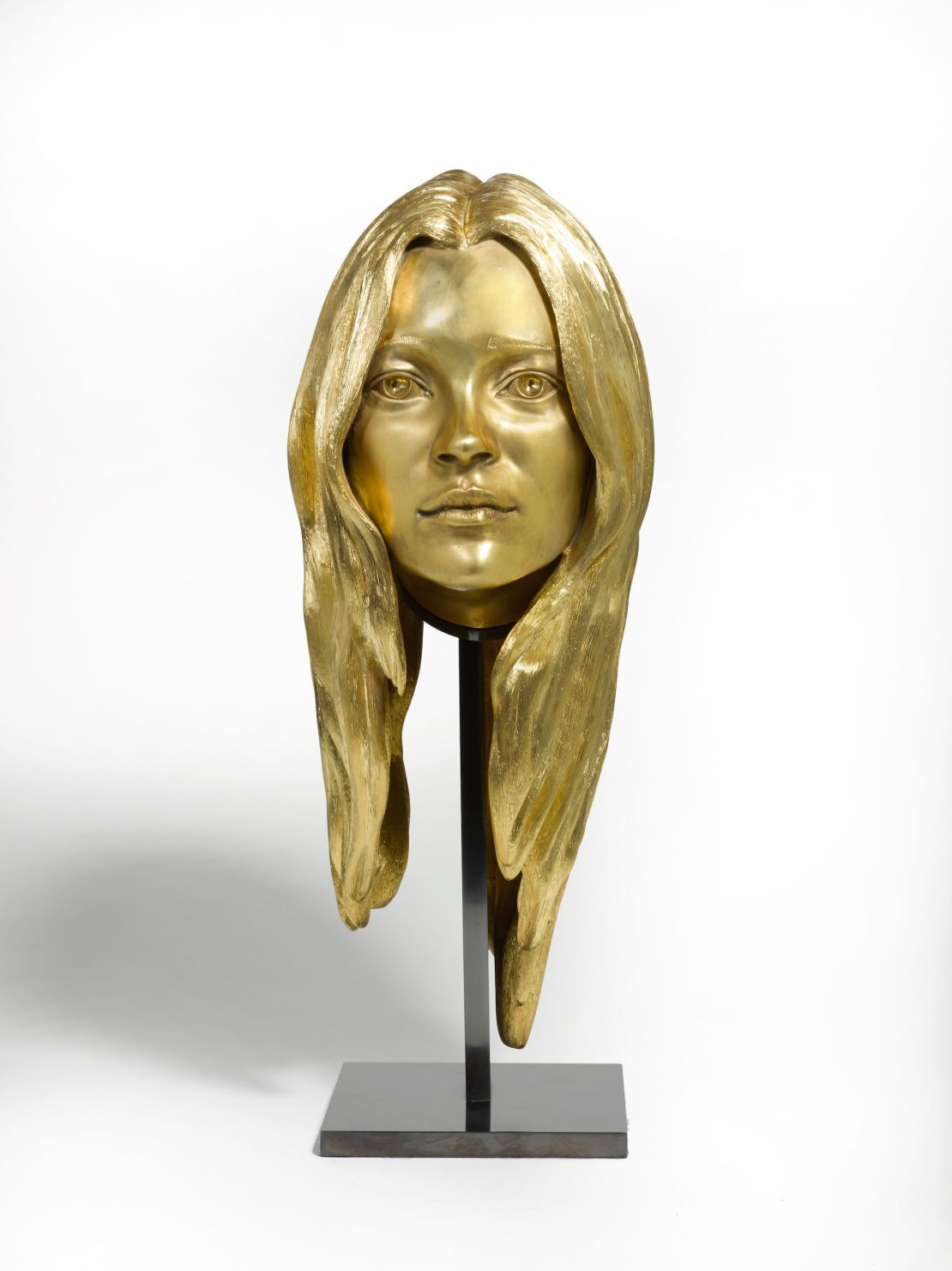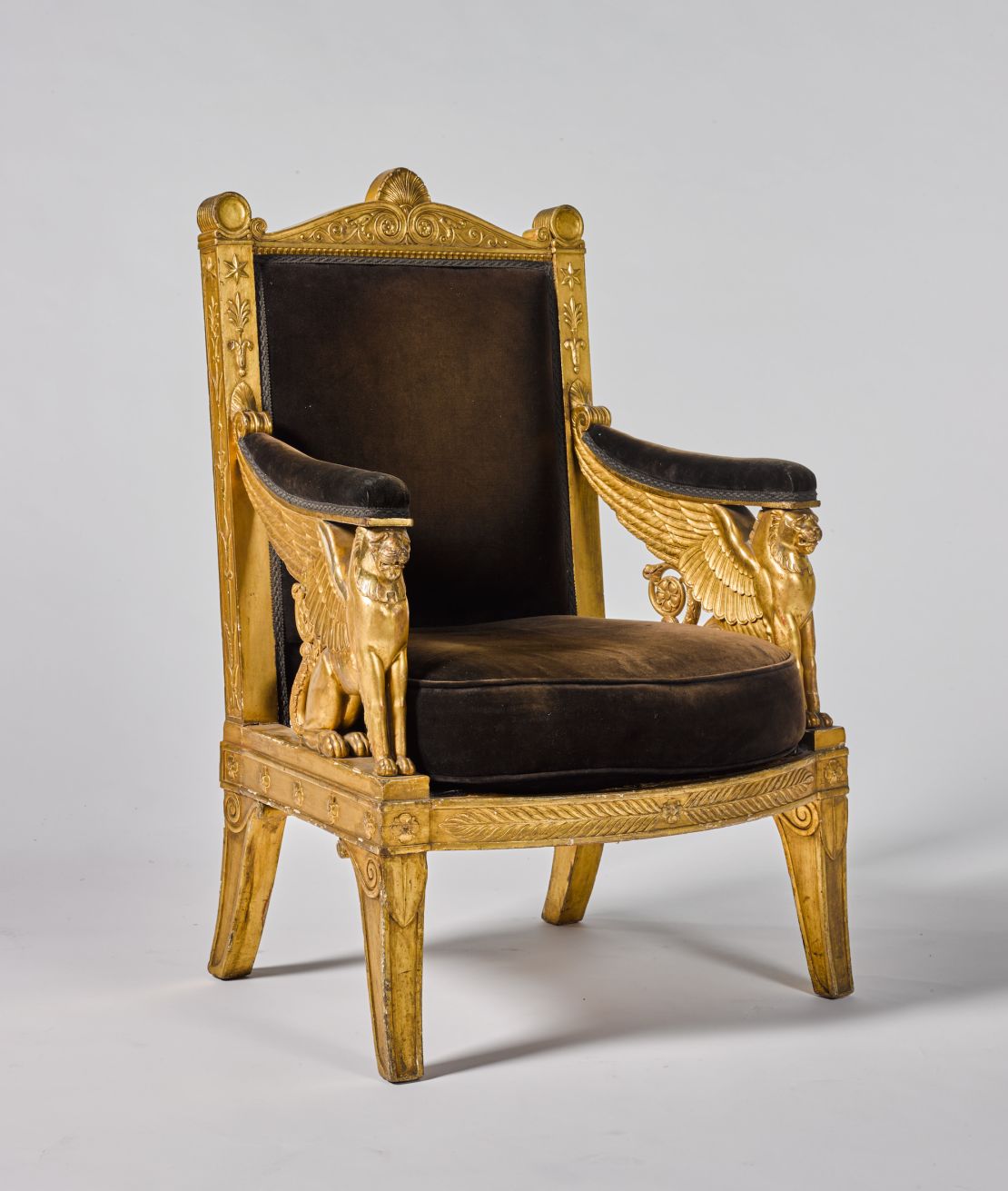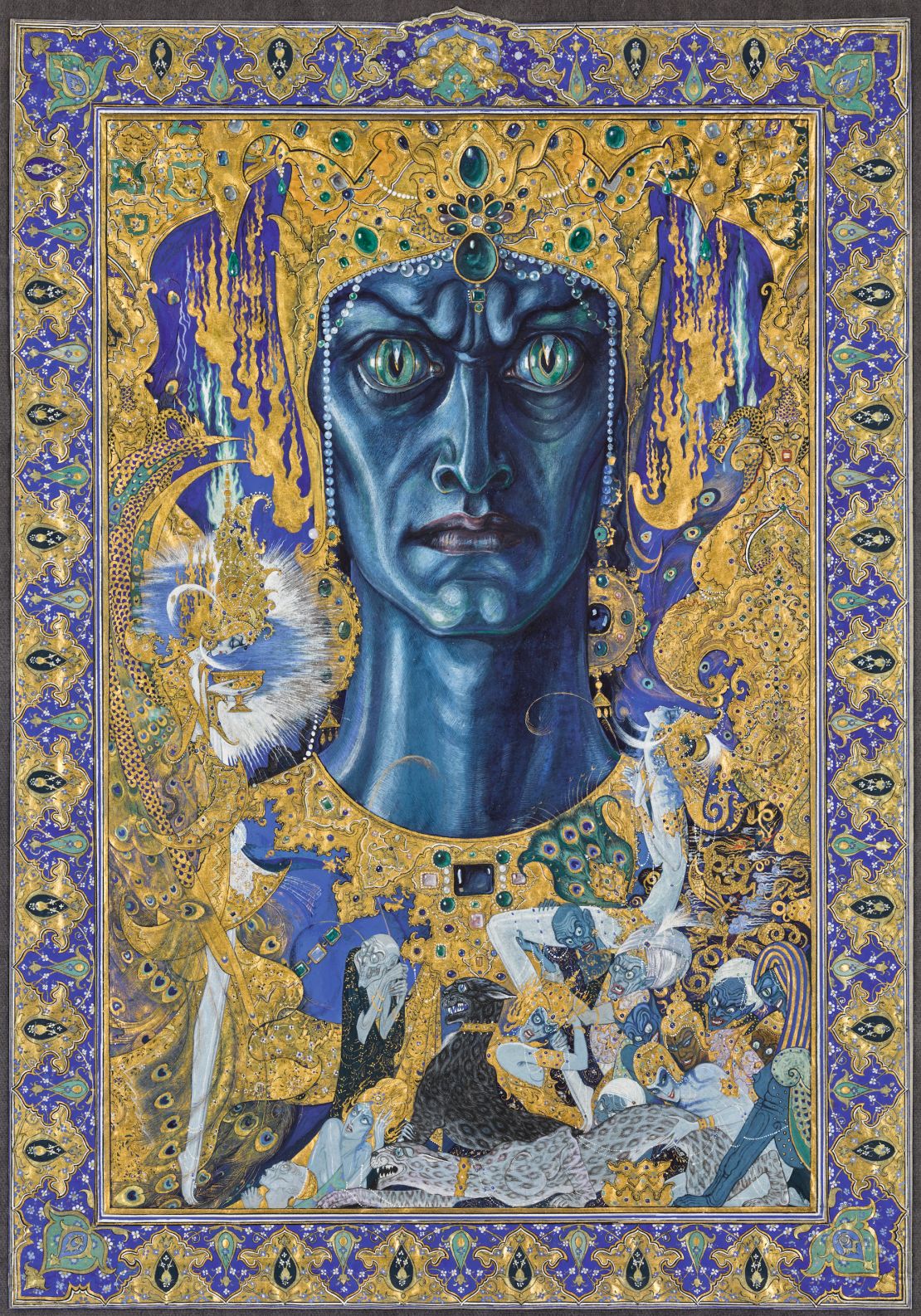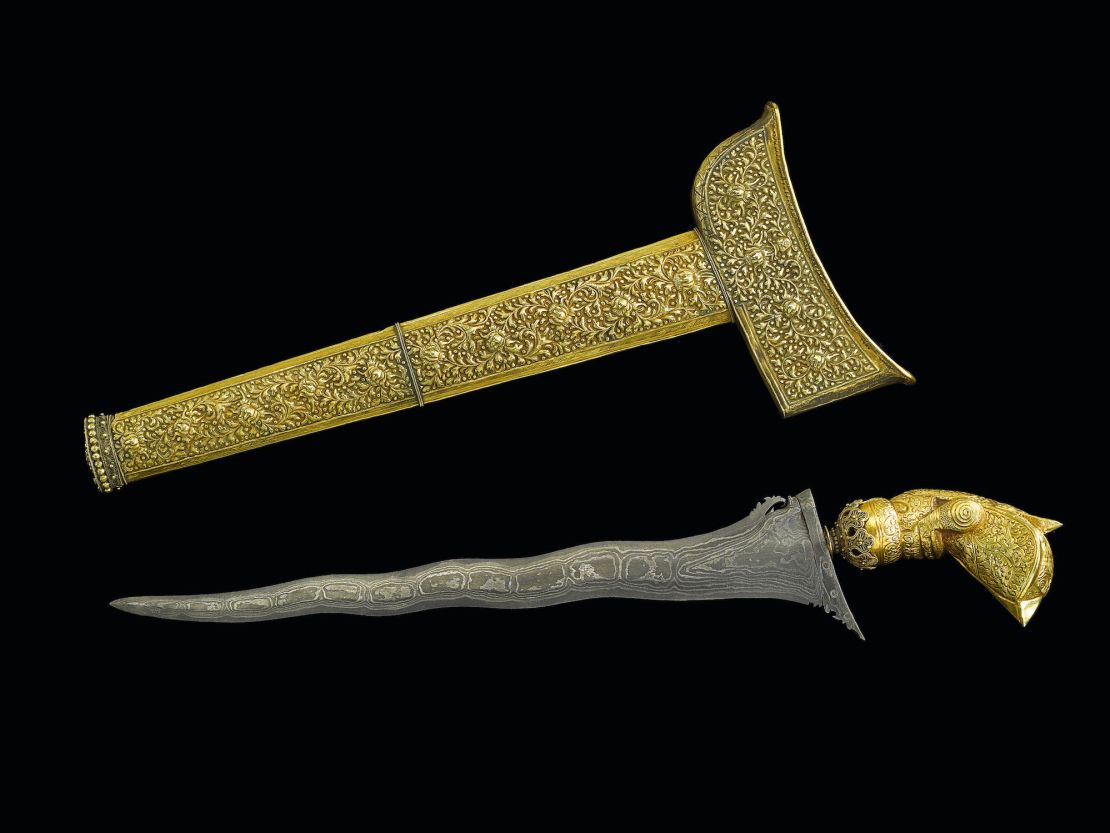Sotheby’s is staging what it claims to be the world’s first auction dedicated entirely to gold.
Due to be held in London Wednesday, the sale will feature a golden Ferrari, a solid gold bust of supermodel Kate Moss and a gilt chair made for Napoleon’s throne room.
The auction, dubbed “The Midas Touch,” highlights the metal’s enduring appeal throughout human history, as shown by its continued use in jewelry and the arts. But the theme has also attracted criticism from historians and art experts who believe the collection promotes an extravagance out of keeping with modern values.
Items from Sotheby's "The Midas Touch" auction in London
According to the auction house’s senior director, Constantine Frangos, the sale was organized following a spike in prices and demand for gold from Asia, Russia and the Middle East.
“Today, gold works of art, and of course gold jewelery, have an international appeal and we’ve already seen interest from around the world for works in the Midas Touch sale,” Frangos said in an email interview.
The collection will feature jewelery, sculptures, paintings, ancient texts and religious objects, blending traditional and modern styles of gilded art.
The sale, Frango said, was curated to span the history of gold’s decorative use, from a rare seventh- or eighth-century gold figure of the Bodhisattva Avalokiteshvara to contemporary works by Yves Klein and Marc Quinn (including the latter’s 18-carat-gold Moss bust).

“I think this sale really reflects the timelessness of gold,” said Frangos, adding that although Quinn’s work and the Bodhisattva are separated by over 1,000 years, comparisons can be drawn between the two works.
“Both deify their subjects, the Bodhisattva Avalokiteshvara as a traditional, sacred object, whilst Quinn’s piece idolizes and immortalizes the female form as a timeless, deified entity,” he said.
“Both use the medium of gold to create their subjects as revered and glorified, making the choice to use this most precious of metals in the pursuit of a perfect image,” Frangos added.
Sotheby’s hopes to attract bids up to £400,000 ($525,000) for Quinn’s sculpture, while a ceremonial fauteuil, commissioned for Napoleon’s Throne Room at the Palais de Tuileries and built in 1804, has a top estimate of £300,000 ($394,000).

Elsewhere, Klein’s 1961 gold-leaf artwork “Monogold Sans Titre (MG44)” is expected to see bids up to £1.2 million ($1.6 million), and a 1977 Ferrari 512 BB has an estimated price of up to £450,000 ($590,000). At the other end of the sale, a 22-carat 20th-century replica of an Etruscan gold wine cup is expected to fetch between £3,500 and £4,500 ($4,600 to $5,900).
A sign of the times
The auction has attracted criticism from a number of acclaimed art historians, with some saying that the sale captures a brash, “bling” spirit of the age at a time when the gap between the world’s rich and poor is widening.
Gauvin Bailey, professor of art history at Queen’s University in Canada, said that as contemporary society is “ever more divided between the haves and have-nots, gold and its promise of instant riches and celebrity continues to capture our imaginations.”
“Gold inspires people to dream of escape, but it also inspires resentment and outrage,” he said in a phone interview. “Gold’s ability to flood the market and cause financial disaster has also made the metal a perennial source of fear.”
The desire to invest in gold objects as symbols of wealth rather than just material gain, “is fascinating,” according to Alison Wright, a professor of art history at University College London.
“The target markets of Asia (especially China), Russia and the Middle East are not only places where the economic gap between the super rich and the very poor is marked, and the ability to spend competitively is leading the surge in the luxury market, but (they) are also, broadly speaking, places with very long histories both of high valuation of gold and of advanced skills in working it,” she said.

Wright said the auction reflected contemporary mores not just of gold, but of modern society.
“Gold’s value is culturally and economically determined, and it was by no means equally valued in all societies at all times,” she said.
“The Sotheby’s show really holds a mirror to our own times of fast-moving fashion and shifting boundaries of taste, as well as global markets and anxiety over capital,” she added.
Bailey meanwhile highlighted Quinn’s bust of supermodel Moss, saying that it “speaks volumes about today’s concerns”.
“As a society we are becoming more obsessed with celebrity – from Kim Kardashian’s ‘bling’ to the golden elevators in the Trump Tower – yet more conscious of how the objectification of women hurts real people,” he added.

Quinn’s sculpture reaches back to a long tradition of people being turned into gold, noted Bailey, “from King Midas himself to James Bond’s ‘Goldfinger’ and its unforgettable image of a gold-plated Shirley Eaton, an earlier sex symbol transformed into an objet de vertu.”
Bond himself features in the sale, in the form of a golden 18-volume set of Ian Fleming’s works created to commemorate the centenary of the author’s birth. According to the auction catalog, each tome features diamonds, crystals, gold and silver leaf tooling and “original leather-trimmed, fleece-lined slipcases lettered in gilt.”
Human fascination
Historians have long observed gold’s value in human societies, such as the Inca, who saw gold as the sweat of the sun and gave it divine status. Since then it has often been used to produce a sense of splendor, from the shimmering mosaics of Byzantine churches to the sheaths of Burmese pagodas, said Bailey.
“But it has also been the source of human misery and rapaciousness,” he added. “The conquest of the Americas was driven by a lust for the metal, as were tomb robberies and other forms of plunder the world over, from Egyptian pyramids to Moche graves.”

The auction subtly nods to the darker side of gold’s history by including of a portfolio of Sebastião Salgado photographs, which capture the grim conditions in mines at the height of the Brazilian gold rush. “Rather than showing the glitz and splendor of gold as illustrated in the other lots,” said Frangos, “the photographs (demonstrate) the extent to which man will go in their quest for gold.”
Wright, however, pointed to the inclusion of objects that “make no effort to escape the category of the vulgar or ‘merely’ fashionable.”
She added: “In terms of fashion now, gold is riding high aesthetically, partly because of the celebration of shine and the obviously fake that’s going on on the high street, and some resurgence in the use of gold in art.”
But as Quinn is quoted as saying in the auction catalog: “Gold is a metal that humans have decided is one of the most valuable metals in the world, but like their invented images of perfection, gold itself is a belief system – inherently no more valuable than any other metal.”









